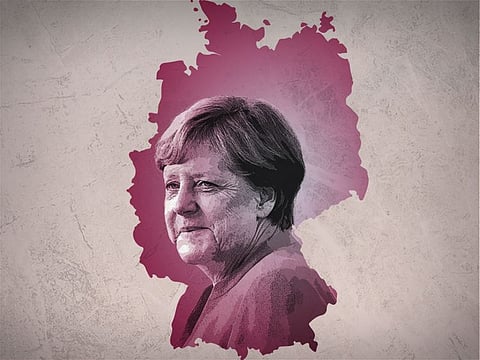Why Germans crave a safe pair of hands
Retirement of Merkel has Germans looking to Social Democrats, Olaf Scholtz for leadership

In four weeks’ time, Germans will be casting their ballots in a federal election that will eventually end up choosing a new chancellor. For many of Germany’s 60 million voters, it will be the first time when they will see someone other than Angela Merkel leading Europe’s strongest economy.
As things stand now, it looks as if Olaf Scholz, her deputy and finance minister — the leader of the centre-left Social Democrats (SPD) will be in the driving seat in the inevitable horse-trading that will be needed to form a new government.
In a series of opinion polls published in recent days, SPD has overtaken the Greens and is now neck-and-neck with Merkel’s Christian Democrats (CDU) and its Bavarian allies, the CSU.
For the first time since April 2017, Scholtz’s SPD are level at 22 per cent support with Merkel’s parties. And the trend is positive, with the SPD up three full points, with the CDU/CSU dropping a similar number.
The reality is that no single party can gain enough electoral support to form a majority of the 598 seats in the Bundestag come election day on Sep. 26 — and it may take months to hammer out a coalition deal between at least two other partners.
Should the current levels of party support stand until then, the existing coalition between CDU/CSU and the SPD would still require a third partner as they most probably will not hold 300 seats together when the dust finally settles.
That’s one of the reasons now why German voters are coming to grips with post-electoral permutations that will shape their future government and decide who will follow in Merkel’s footsteps — and they’ve developed a quick colour code shorthand that will become critical in the run up to September 26.
Colour coding in German politics
There’s the so-called ‘Black-Red coalition — made up of black that represents the conservatives of Merkel’s CDU/CSU parties along with the red of the SPD socialists. It’s the grand coalition that exists now — but both will likely need a third partner.
The party that takes the largest of seats will be in the driving seat in those coalition talks, with Scholtz now the leading contender. Germans are well used to this alignment, with the black-red coalition being in power for the past eight years.
Anyone for pizza? Back in the immediate post-unification days when Bonn was still the capital of Germany, Conservatives and Greens met in a suburban Italian restaurant — and ‘pizza connection’ has become political shorthand for the two sides to hold exploratory talks at a federal level. At a state level, both the CDU and Green are partnered in a coalition that has governed Baden-Wurttemburg for the past four years.
Then some are talking about the ‘Jamaica’ option, a three-way coalition featuring the colours of the Caribbean nation’s national flag — the black of the CDU/CSU, the Greens and the yellow of the Free Democrats.
This coalition effort failed at a federal level in the aftermath of the 2017 election before Merkel turned to the SPU. It has been tried and tested, however, at a state level, where Schleswig-Holstein has a ‘Jamaica’ coalition.
If you find this confusing, then imagine how Germans feel. There’s even talk of a ‘Kenya’ coalition — the black, green and red of the African nation’s flag. That would be CDU/CSU, the SPD and Greens joining in a national federal partnership.
And yes, it has happened before at a state level — with the parties coming together in Brandenburg and Saxony in regions of the former East Germany — shutting the far-right Alternative for Germany (AfD) out of power. For many German democrats across the political spectrum from left to centre-right, keeping the AfD from power is paramount and hence the broad Kenyan coalitions.
Then there’s always the possibility of a ‘traffic light’ coalition — red of the SPD, yellow of the Free Democrats along with the Greens. And yes, there is a state example — in the Rhineland Palatinate and its regional parliament in Mainz.
While the opinion polls are far from being definite — what’s that cliché that’s trotted out by politicians that the only poll that counts is the actual vote — they do illustrate that the departure of Merkel is a watershed moment in how they view the federal parties and their future. Since 2017, the CDU/CSU has lost one-third of the voters who backed Merkel then.
Scholtz has continuously proven to be the most popular candidate with 34 per cent of those polled saying they would vote for him to be chancellor if it were possible.
It’s a remarkable turnaround for a party that has been a constant in Germany since its earliest days when Otto von Bismark was Chancellor in the 1870s. It too was a vocal opponent of Adolf Hitler and his National Socialists.
Merkel has endorsed Armin Laschet as the conservative candidate to succeed her. Trouble is his numbers are sliding — making it all the more likely that all the colours of the rainbow will be fully utilised come September 26.
Sign up for the Daily Briefing
Get the latest news and updates straight to your inbox







